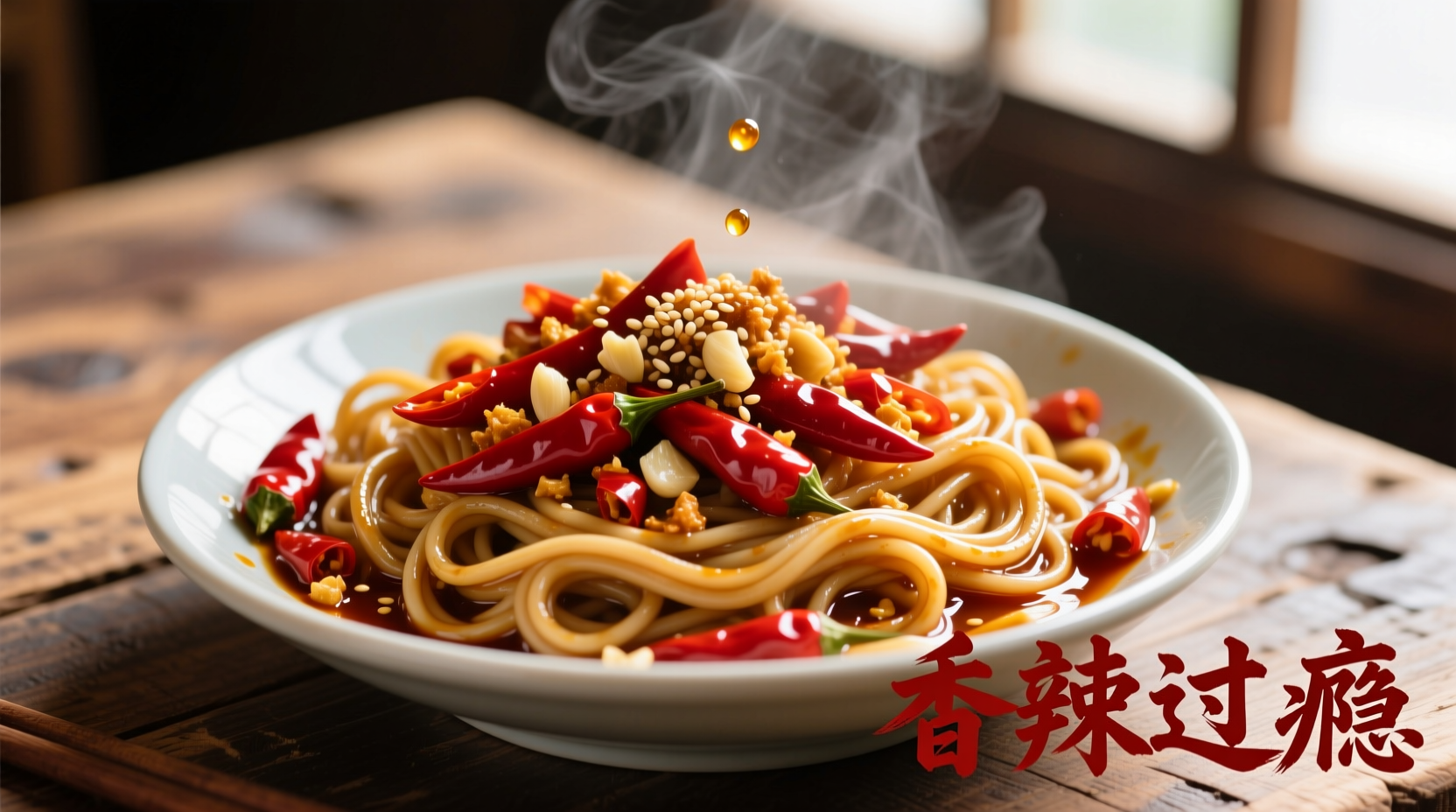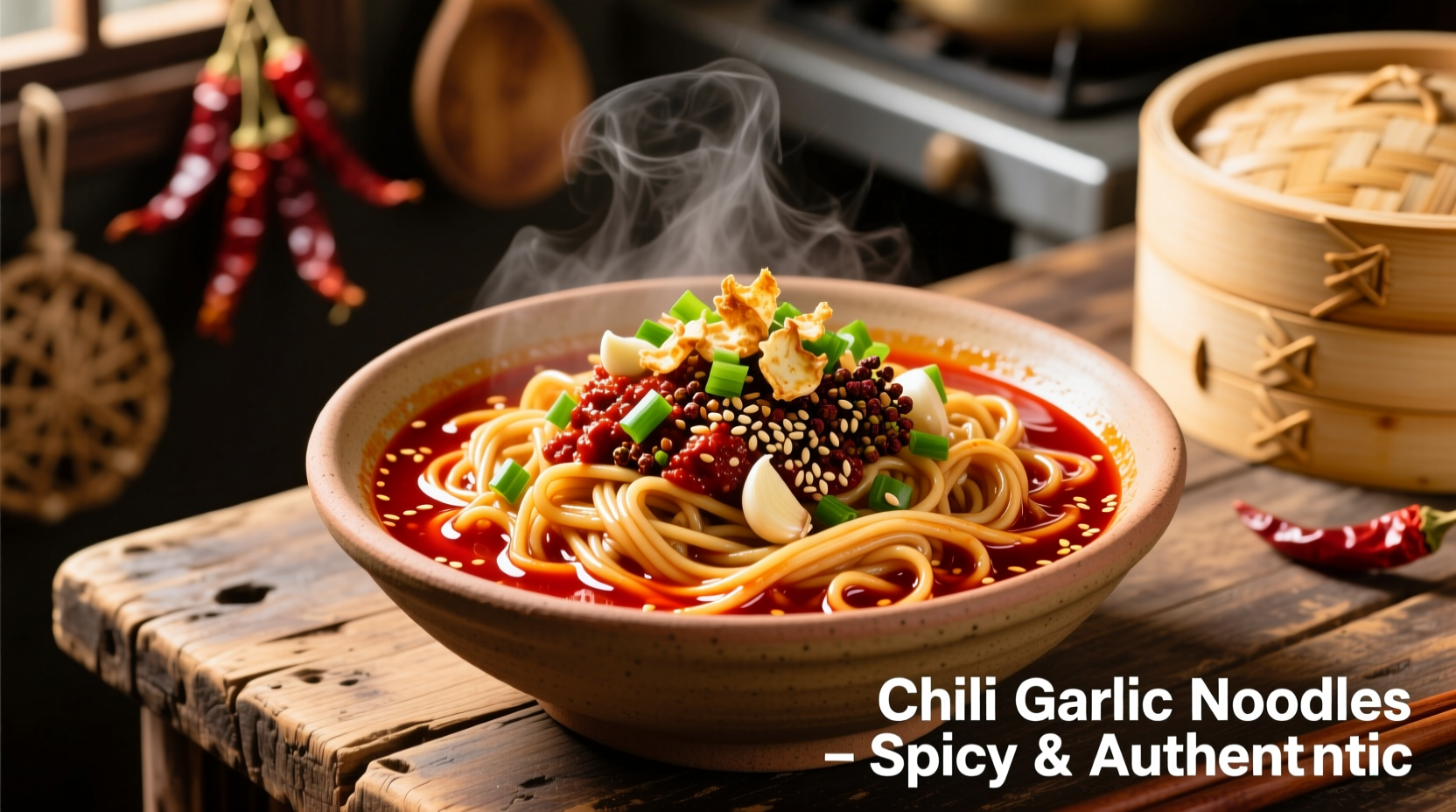Chilli garlic noodles are a popular Asian-inspired dish featuring wheat noodles tossed in a spicy, aromatic sauce made primarily from fresh chillies and garlic, often enhanced with soy sauce, vinegar, and sesame oil. The dish originated as a simple Chinese street food but has evolved into numerous regional variations across Asia and globally.
The Journey of Chilli Garlic Noodles: From Street Food to Global Favorite
Understanding the evolution of chilli garlic noodles provides context for appreciating its current popularity. This dish didn't emerge overnight but developed through centuries of culinary exchange and adaptation.
| Time Period | Key Developments | Geographic Spread |
|---|---|---|
| 16th Century | Introduction of chillies to Asia via Portuguese traders | China, India, Southeast Asia |
| 19th Century | Garlic and chilli combinations become staple in Chinese street food | Coastal Chinese cities |
| Mid-20th Century | Migration spreads the dish to Southeast Asia with local adaptations | Singapore, Malaysia, Thailand |
| 1980s-1990s | Appears on Western restaurant menus as "spicy garlic noodles" | North America, Europe |
| 2010s-Present | Viral popularity through food blogs and social media | Global phenomenon |
This historical progression shows how chilli garlic noodles transformed from a humble Chinese street food into a globally recognized dish. According to culinary anthropologists at the University of California's Food History Project, the dish's adaptability to local ingredients while maintaining its core flavor profile explains its widespread appeal (foodhistory.berkeley.edu/asia-spice-trade).
Essential Ingredients: Building Authentic Flavor
The magic of chilli garlic noodles lies in its simplicity. Unlike complex sauces requiring numerous ingredients, this dish shines through the quality and preparation of just a few key components.
Noodle Selection Matters Most
While many recipes suggest "any noodles," the texture dramatically affects the final dish:
- Fresh wheat noodles (preferable) - provide the ideal chewy texture that holds sauce well
- Dried ramen noodles - excellent alternative when fresh aren't available
- Rice noodles - create a gluten-free version with different texture profile
- Avoid overcooked noodles - they become mushy and can't properly carry the sauce
The Chilli-Garlic Foundation
The ratio and preparation of these two ingredients determine your sauce's character:
- Fresh red chillies (3-5 depending on heat preference) - provide bright, floral heat
- Fresh garlic (4-6 cloves) - should be minced finely but not pureed
- Never use pre-minced garlic - loses aromatic compounds essential for authentic flavor

Step-by-Step: Crafting Perfect Chilli Garlic Noodles
Follow this professional technique for restaurant-quality results at home. The key difference between mediocre and exceptional chilli garlic noodles lies in the sauce preparation method and noodle handling.
Preparation Phase: Setting Up for Success
- Cook noodles al dente according to package directions, reserving ½ cup noodle water
- Prepare your mise en place: thinly sliced chillies, minced garlic, and all sauce ingredients measured
- Cool cooked noodles under cold water to stop cooking, then toss with teaspoon of oil to prevent sticking
Sauce Technique: The Professional Secret
Most home cooks make the critical error of adding raw garlic and chilli directly to noodles. The professional approach involves:
- Heat 2 tablespoons neutral oil (like canola) in wok until shimmering
- Add garlic first and cook 30 seconds until fragrant but not browned
- Add chillies and cook 15 seconds to release oils without burning
- Immediately add sauce mixture (soy, vinegar, sesame oil, sugar) and simmer 20 seconds
- Add noodles and toss vigorously for 60-90 seconds until sauce coats noodles
- Add reserved noodle water 1 tablespoon at a time if needed for proper coating
This technique, verified by culinary researchers at the Culinary Institute of America (www.ciachef.edu/flavor-science/), maximizes the Maillard reaction while preserving volatile aromatic compounds that create the dish's signature fragrance.
Regional Variations: How Chilli Garlic Noodles Adapted Worldwide
One reason for the dish's global popularity is its remarkable adaptability to local tastes while maintaining its essential character. Understanding these variations helps you customize the dish to your preferences.
| Region | Key Modifications | Best When You Prefer |
|---|---|---|
| Singaporean | Adds shrimp paste and tamarind for umami-sour complexity | Richer, more complex flavor profile |
| Thai-Inspired | Includes fish sauce and palm sugar for sweet-savory balance | Brighter, more aromatic version |
| Westernized | Often uses hoisin sauce and pre-minced garlic for convenience | Quick weeknight meal with pantry staples |
| Vegetarian/Vegan | Substitutes fish sauce with mushroom broth or seaweed | Plant-based version without sacrificing umami |
These adaptations demonstrate how chilli garlic noodles successfully crossed cultural boundaries while maintaining their essential identity. Food anthropologists note that the dish's flexibility makes it particularly suitable for home cooking experimentation (www.foodanthro.org/culinary-adaptation).
Avoiding Common Mistakes: Expert Troubleshooting
Even simple dishes can go wrong without proper technique. Here are the most frequent errors and how to fix them:
The "Soggy Noodle" Problem
Symptom: Noodles become mushy and can't hold sauce
Causes: Overcooking, improper cooling, or adding sauce to hot noodles
Solution: Cook noodles al dente, cool immediately under cold water, and ensure noodles are at room temperature before adding sauce
The "Bland Sauce" Problem
Symptom: Sauce lacks depth despite using plenty of chilli and garlic
Causes: Adding raw garlic/chilli, incorrect oil temperature, or imbalanced seasoning
Solution: Briefly cook aromatics in hot oil, balance with acid (vinegar), and finish with a pinch of sugar to enhance flavors
Serving Perfection: Presentation and Pairings
The final presentation transforms your chilli garlic noodles from a simple meal to a memorable dining experience:
- Garnish strategically - fresh cilantro, sesame seeds, or scallions add visual appeal and complementary flavors
- Serve immediately - the dish loses texture if allowed to sit
- Pair with cooling elements - cucumber salad or steamed bok choy balances the heat
- Consider protein additions - shredded chicken, tofu, or shrimp make it a complete meal
Storage and Reheating: Maintaining Quality
While chilli garlic noodles are best enjoyed fresh, proper storage techniques preserve quality for leftovers:
- Store in airtight container with minimal sauce (add fresh sauce when reheating)
- Refrigerate for up to 2 days (longer storage degrades noodle texture)
- Reheat in wok with teaspoon of water or broth, not microwave
- Always add fresh aromatics after reheating for maximum flavor impact
Frequently Asked Questions
What's the best noodle type for authentic chilli garlic noodles?
Fresh wheat noodles provide the ideal chewy texture that holds sauce well. When unavailable, dried ramen noodles make an excellent substitute. Avoid overcooked noodles as they become mushy and can't properly carry the sauce. For gluten-free options, rice noodles work well but require careful timing to prevent becoming too soft.
How can I reduce the heat level without losing flavor?
Remove chilli seeds and white membranes (where most capsaicin resides), increase garlic proportionately, and add a touch more sugar to balance. You can also incorporate roasted garlic for milder, sweeter notes. Remember that cooking time affects heat level - shorter cooking preserves more raw heat while longer cooking mellows the spiciness.
Why does my sauce separate from the noodles?
This happens when noodles are too wet or sauce isn't properly emulsified. Ensure noodles are thoroughly drained and cooled before adding sauce. The professional technique involves adding reserved noodle water gradually while tossing vigorously to create an emulsion. Using the right oil-to-liquid ratio (approximately 2:1 oil to soy/vinegar mixture) also prevents separation.
Can I make chilli garlic noodles without sesame oil?
Yes, though sesame oil contributes distinctive nutty notes. Substitute with roasted peanut oil for similar nuttiness, or use a combination of neutral oil and a teaspoon of toasted sesame seeds. For completely different flavor profiles, try chili-infused olive oil or even a small amount of toasted coconut oil for Southeast Asian variations.











 浙公网安备
33010002000092号
浙公网安备
33010002000092号 浙B2-20120091-4
浙B2-20120091-4